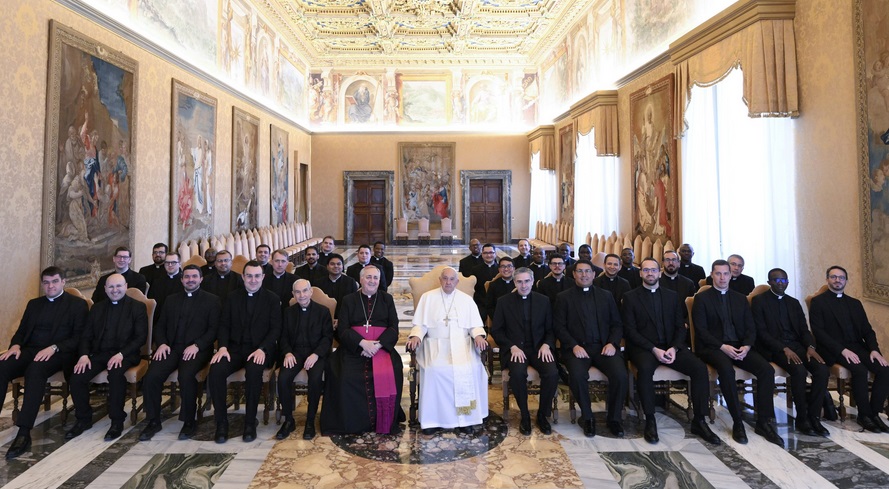Pope Francis reforms ‘school of nuncios’
In a chirograph signed in late March, Pope Francis decreed a change of status for the Pontifical Ecclesiastical Academy, the three-century-old institution that trains the diplomats of the Holy See.
Apr 25, 2025

VATICAN: In a chirograph signed in late March, Pope Francis decreed a change of status for the Pontifical Ecclesiastical Academy, the three-century-old institution that trains the diplomats of the Holy See. The decree, published April 15, transforms the school of nuncios into a new “Institute in Diplomatic Sciences,” thus conforming it to international academic standards and capable of awarding recognised second- and third-cycle degrees (master’s and doctorate).
But the papal decree served as a reminder that the Holy See’s diplomats have the mission to deploy internationally the line defined by the successor of St Peter.
In short, the diplomats are called to promote a synodal church. “In order to properly fulfill his functions, the diplomat (must not) limit himself to the acquisition of theoretical knowledge,” wrote Francis, after emphasising the importance of solid and ongoing formation.
“It is necessary to develop a working method and a way of life that allow him (…) to correctly interpret the objectives and difficulties that an increasingly synodal Church must face,” he said.
It is not the first time Francis subtly reminded the diplomats of the Holy See of their duties. In 2019, the Pope sent a text to all his diplomats, recalling that “criticising the pope behind his back, having blogs or even joining groups that are hostile (to the pope), to the Curia and to the Church of Rome,” was “not compatible” with their status. The Pope also denounced nuncios who mistreat their collaborators and those who “seek luxury.”
Francis more broadly explained that his reform was made necessary by the evolution of the diplomatic mission. “Our time shows that this service is no longer limited to countries where the proclamation of salvation has rooted the Church’s presence,” the Pope wrote, “but that it is also exercised in territories where it is a nascent community; or in international bodies.” The Holy See is today represented at the United Nations in New York (Archbishop Gabriele Giordano Caccia is the Holy See’s permanent observer there), in Geneva (Archbishop Ettore Balestreto), in Vienna (Archbishop Richard Allen Gyhra), and also in Nairobi (Archbishop Hubertus van Megen).
In these bodies, he wrote, “the See of Peter pays attention to the debates, evaluates their content, and, in light of the ethical and religious dimension that is proper to it, offers an interpretation of the major issues that concern today and the future of the human family,” in particular, at this moment, questions linked to gender and artificial intelligence.
The new institute for the training of nuncios should not leave its current premises, Piazza della Minerva, in Rome. It will, however, be more clearly placed under the control of the Secretariat of State of the Holy See, which already collaborated in selecting and training candidates.
However, “several dicasteries of the Roman Curia will be involved in the formation and the collegial bodies of the Academy,” clarified the current Secretary of State of the Holy See, Cardinal Pietro Parolin, in an interview with Vatican media published at the same time as the chirograph. --LCI (https://international.la-croix.com/)







Total Comments:0